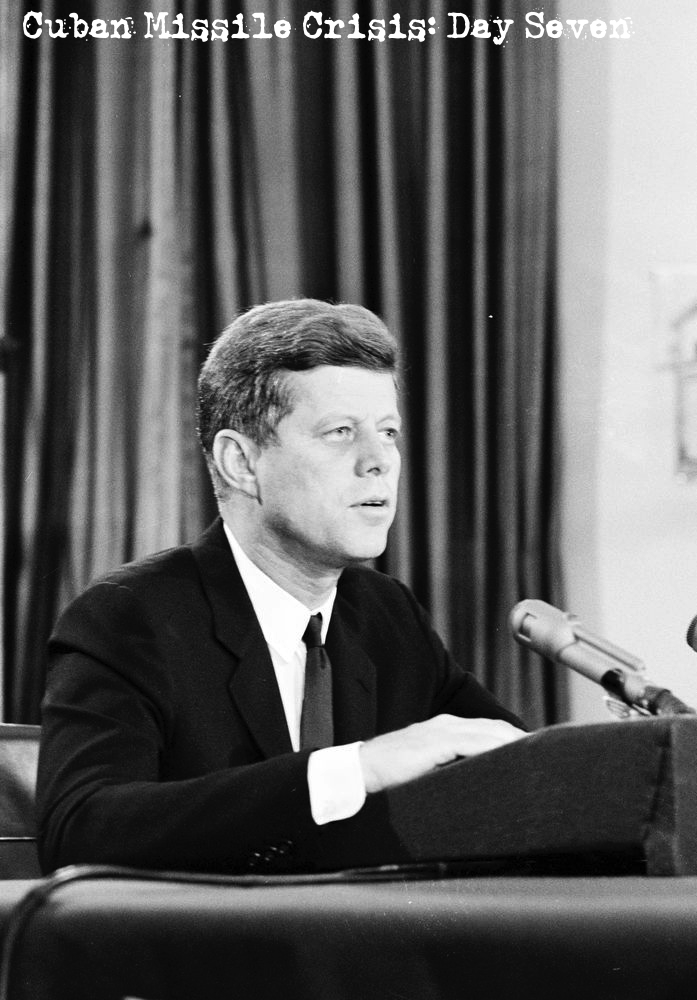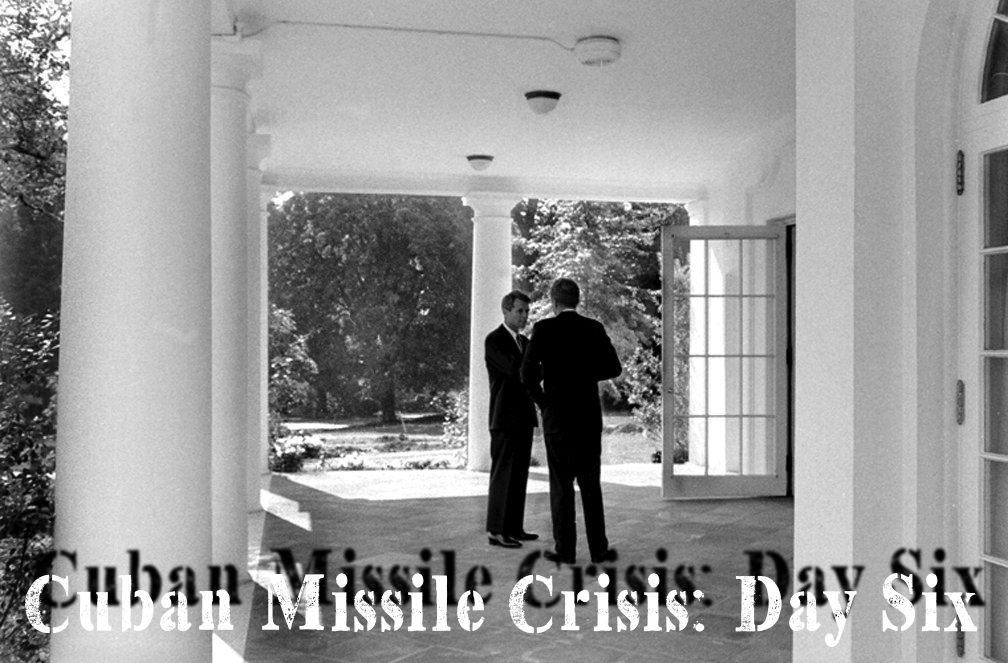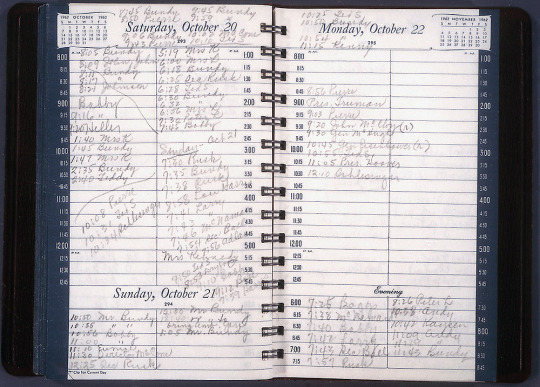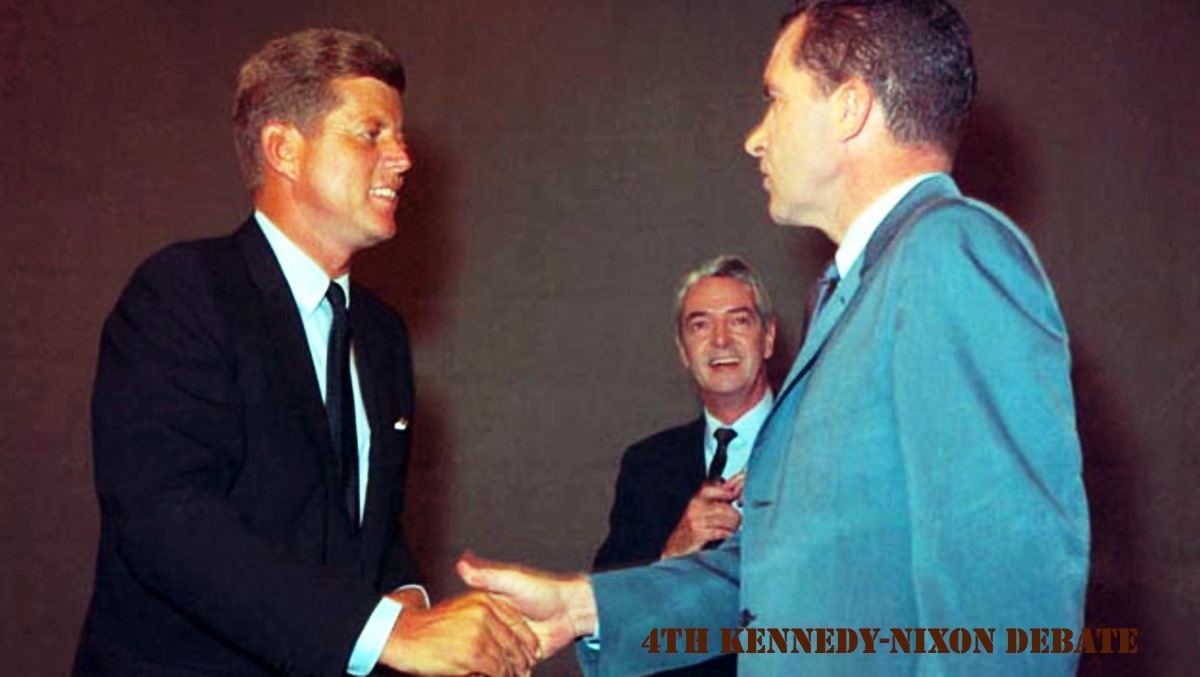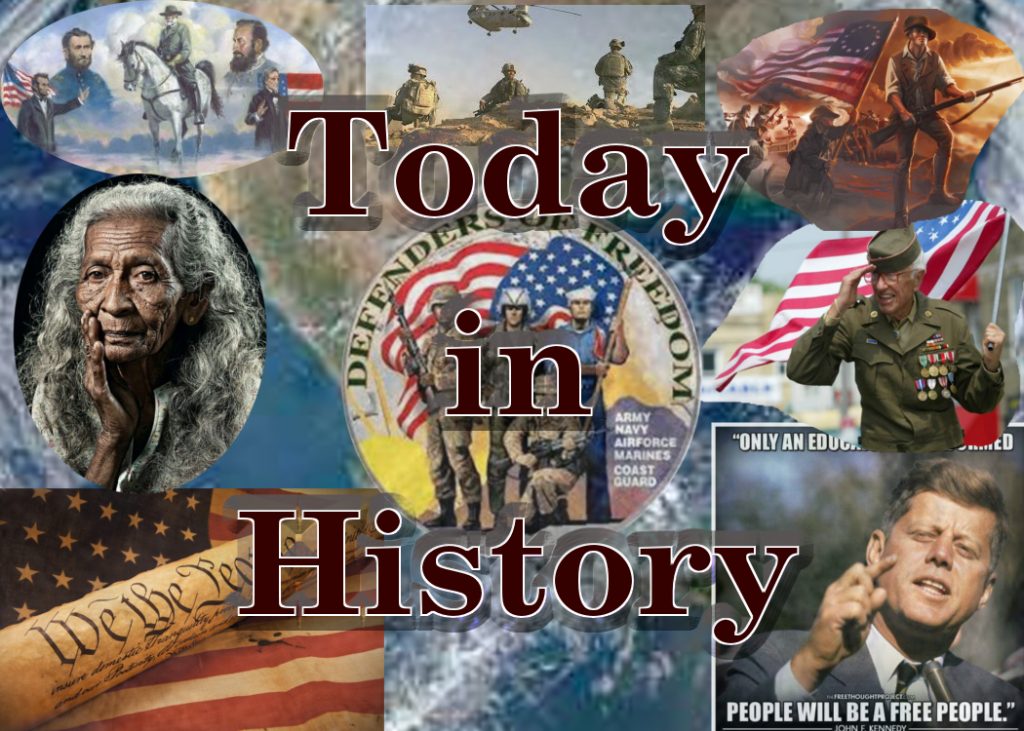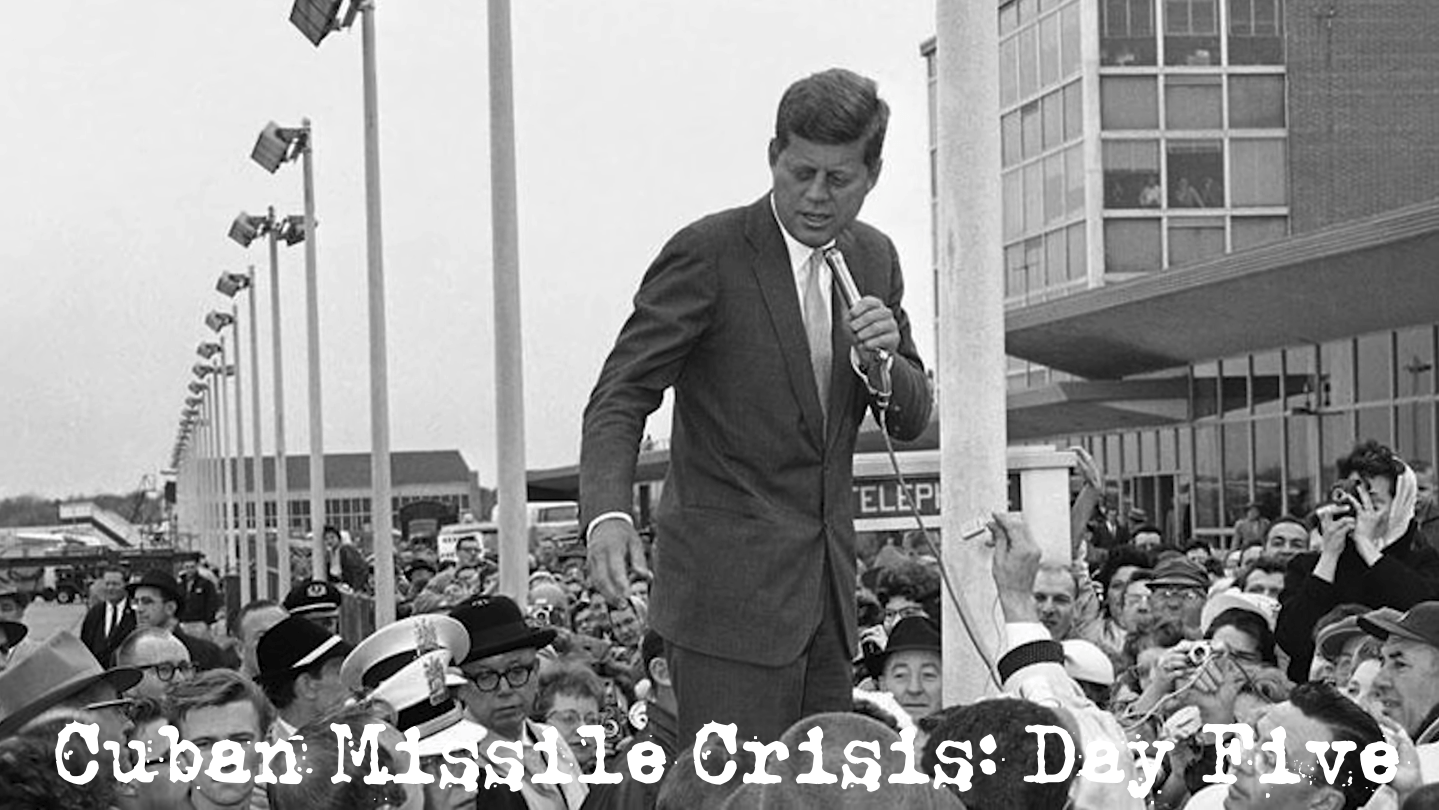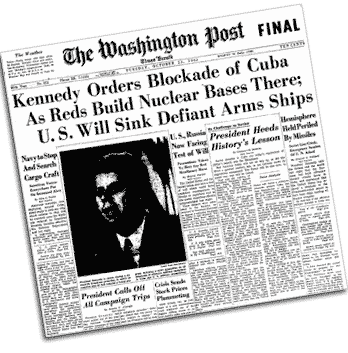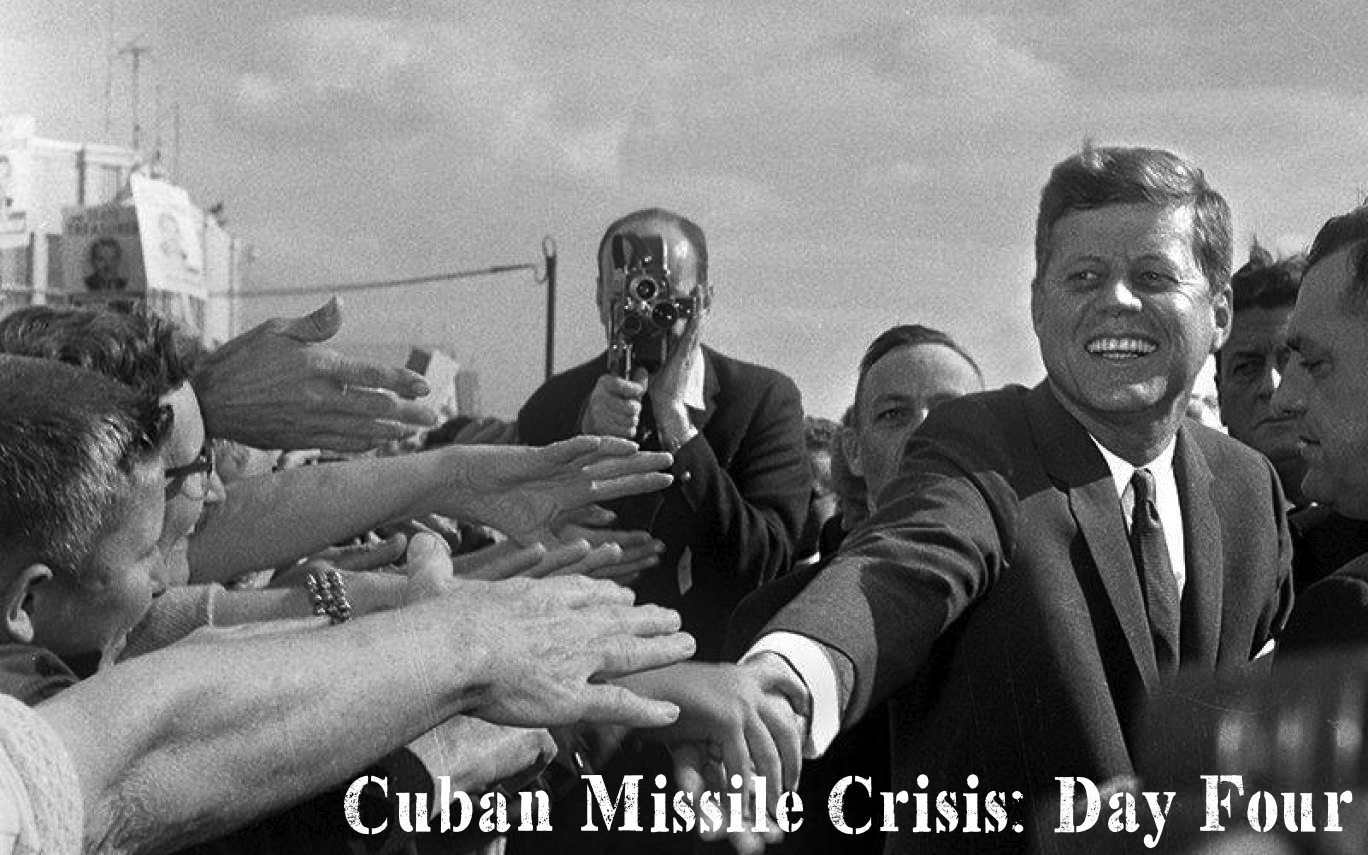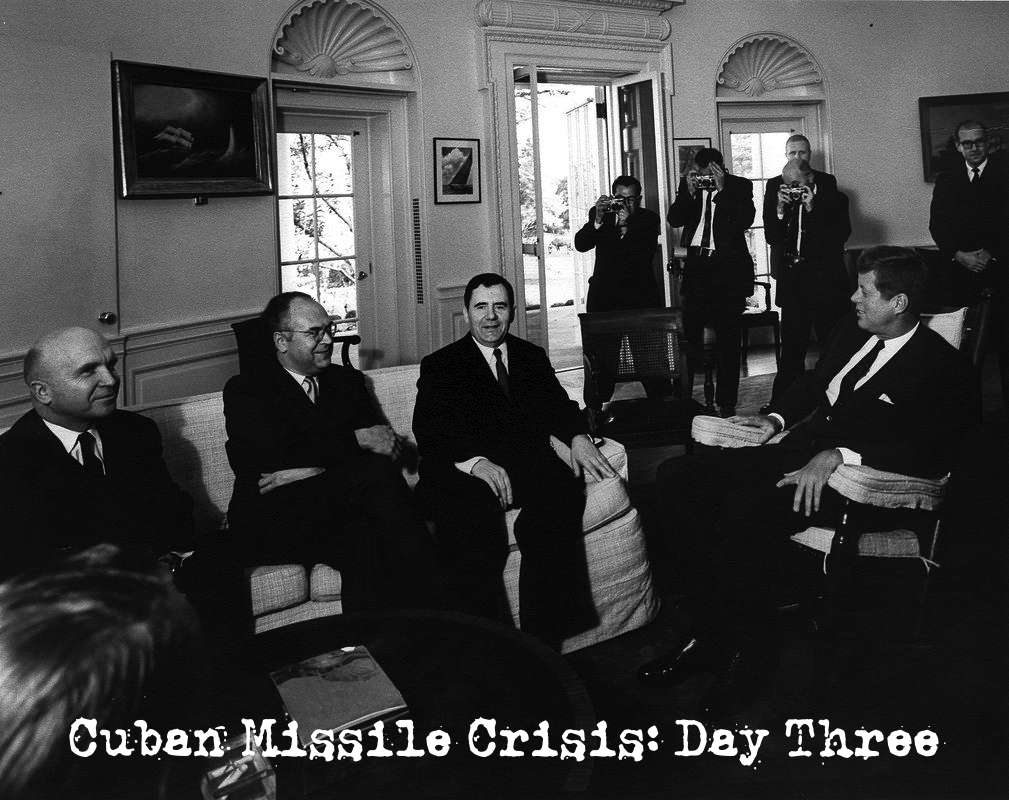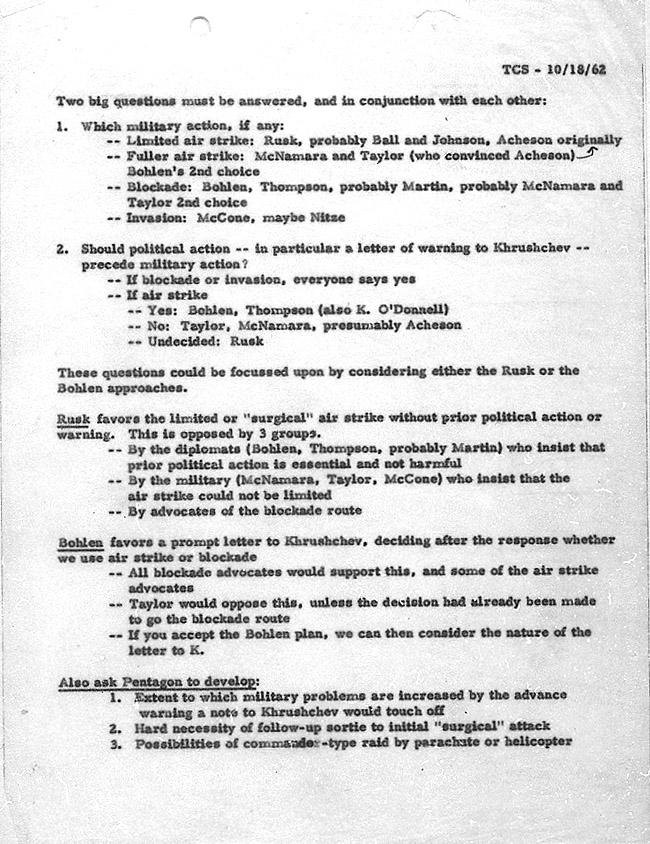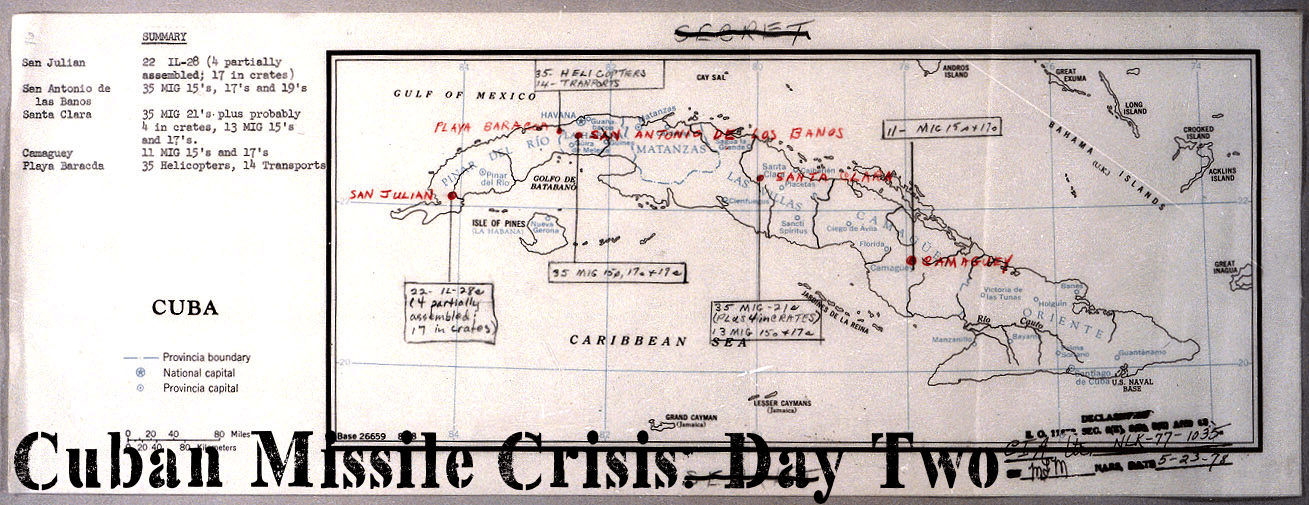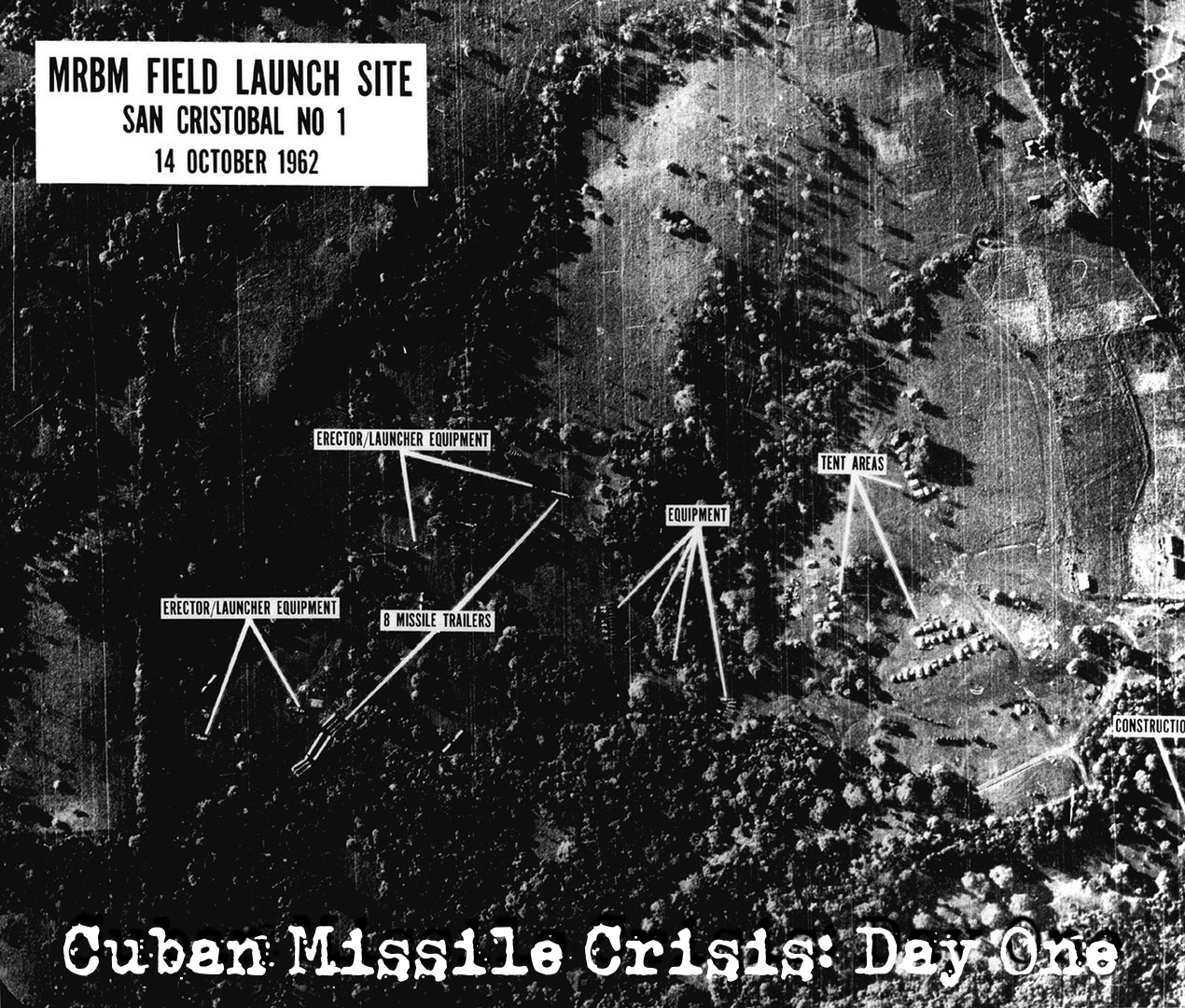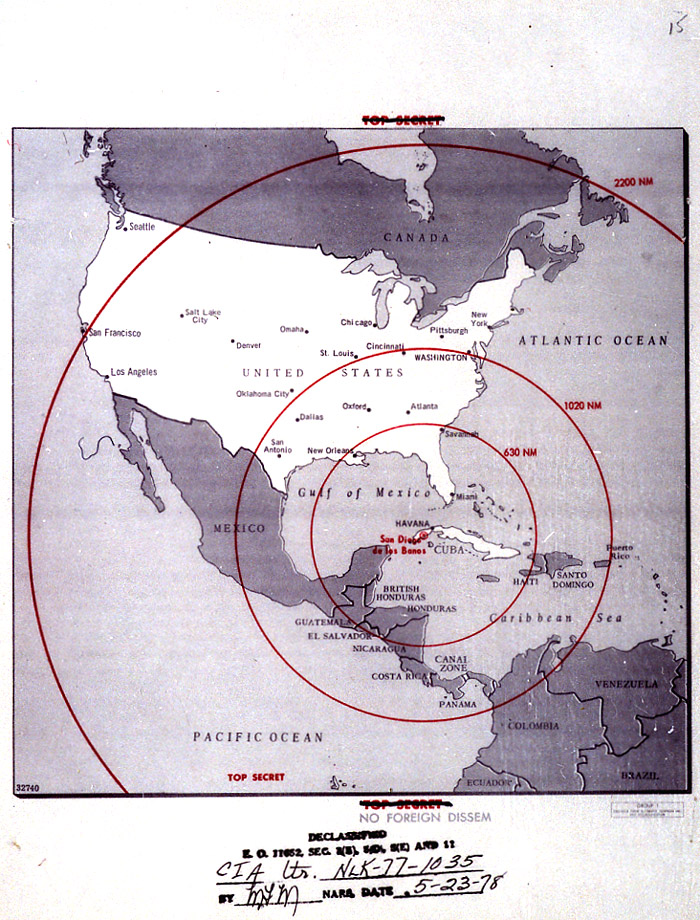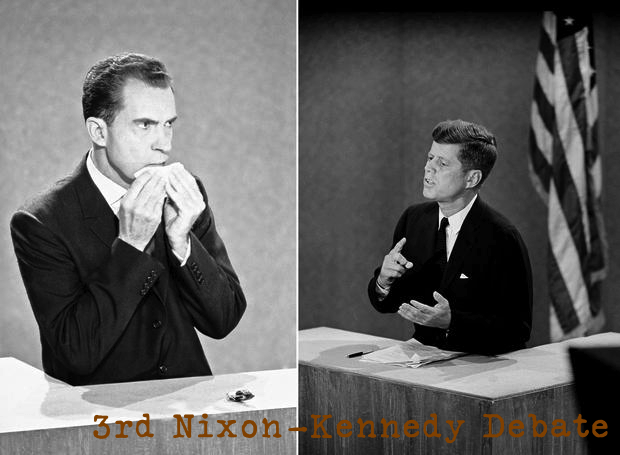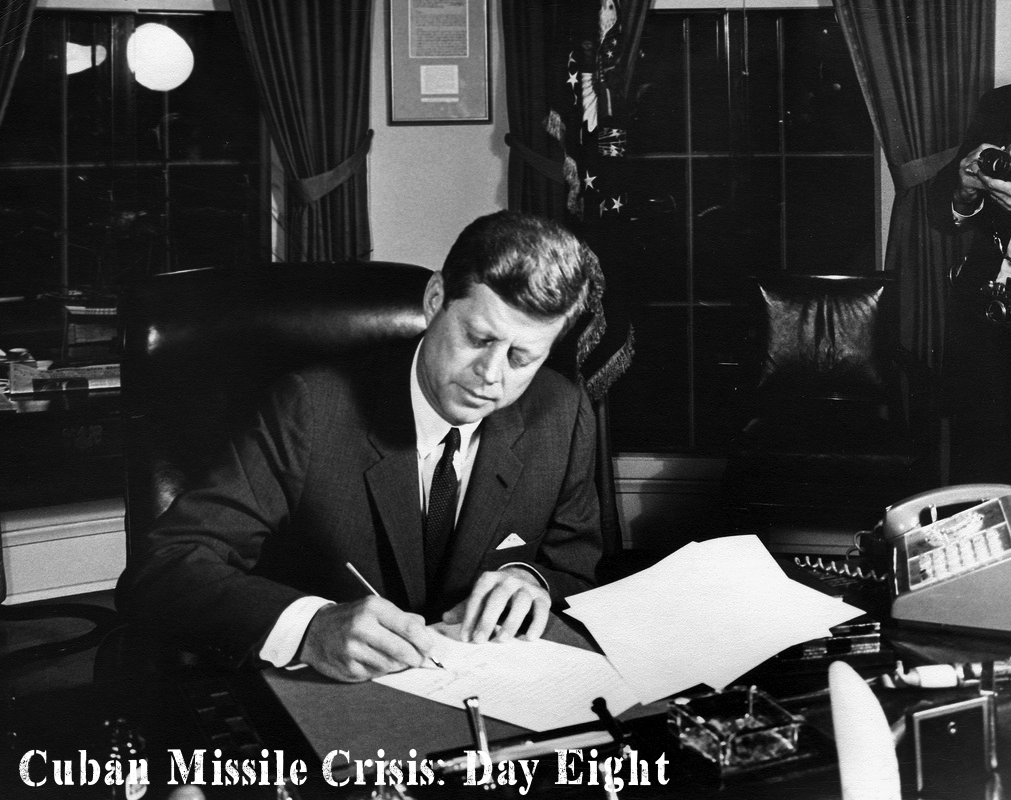
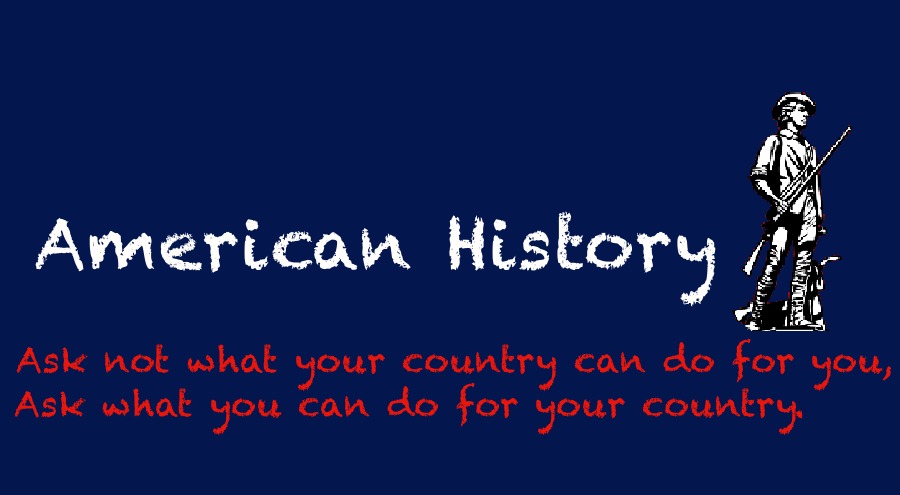
Cuban Missile Crisis: Day Eight
Tuesday, October 23, 1962: The ships of the naval quarantine fleet moved into place around Cuba. Soviet submarines threatened the quarantine by moving into the Caribbean area. Soviet freighters bound for Cuba with military supplies stopped dead in the water, but the oil tanker Bucharest continued towards Cuba. After spending another day talking to his ExComm committee (in their first official meeting), President Kennedy signed Proclamation 3504, authorizing the naval quarantine of Cuba. The four-page proclamation included this statement in the second paragraph:
“The United States is determined to prevent by whatever means may be necessary, including the use of arms, the Marxist-Leninist regime in Cuba from extending, by force or the threat of force, its aggressive or subversive activities to any part of this hemisphere, and to prevent in Cuba the creation or use of an externally supported military capability endangering the security of the United States.”
Additionally, Assistant Secretary of State for Inter-American Affairs Edwin Martin sought a resolution of support from the (OAS) Organization of American States. Ambassador to the United Nations, Adlai Stevenson, brought the matter before the U.N. Security Council. In the evening Robert Kennedy meet with Ambassador Dobrynin at the Soviet Embassy, per his brother’s request. Afterwards, he relayed the conversation to President Kennedy and Britain Ambassador, David Ormsby-Gore at the White House.
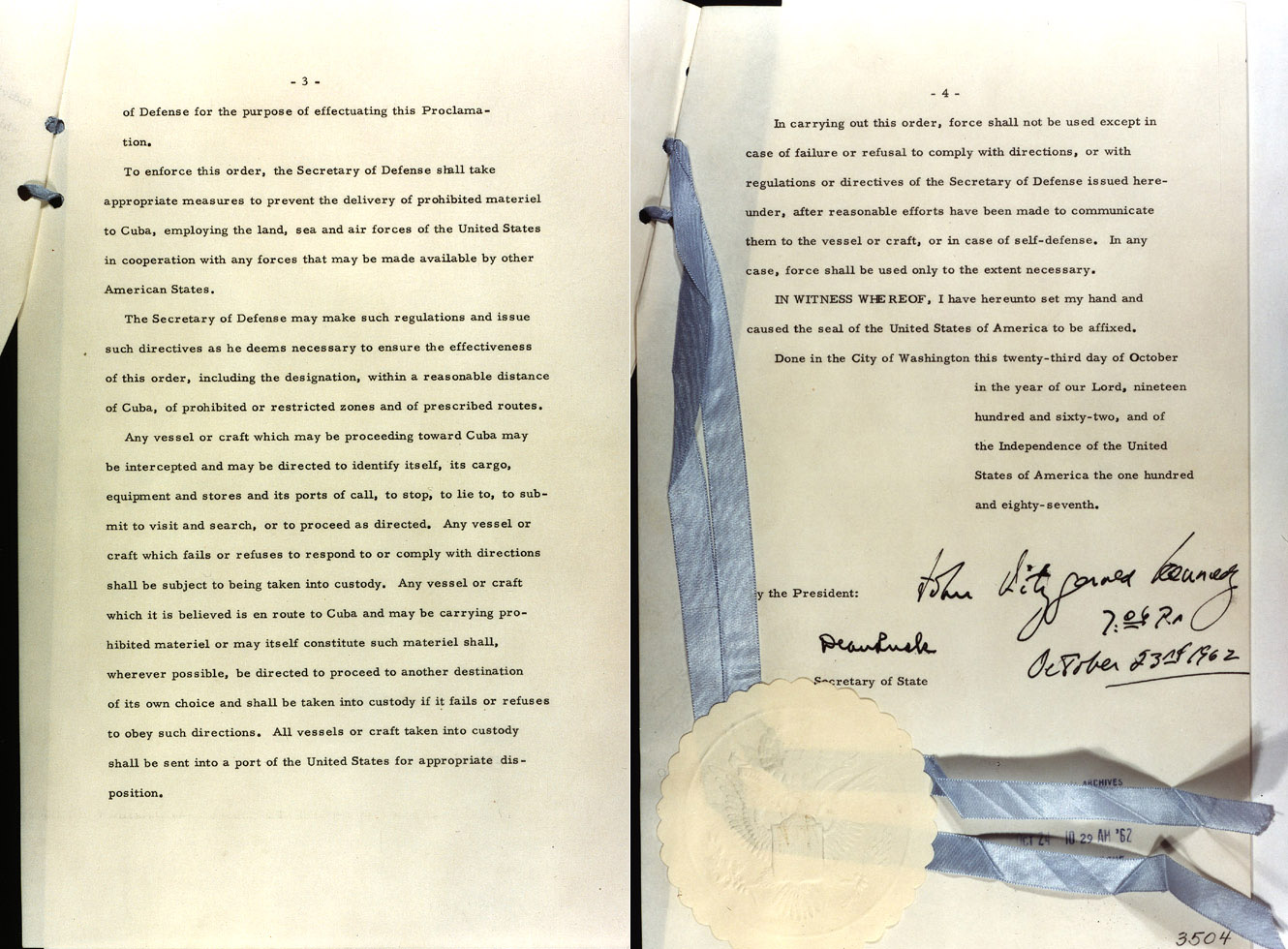
Listen: 10:00 am ExComm Meeting (& Cont), 6:00 pm ExComm Meeting (& Cont.) & 7:10 pm Conversation with Brother
Read: Full Text of Proclamation 3504& Bobby’s Memorandum of His Meeting with Ambassador Dobrynin

